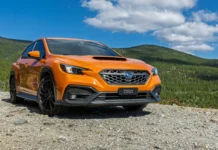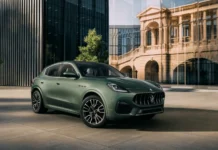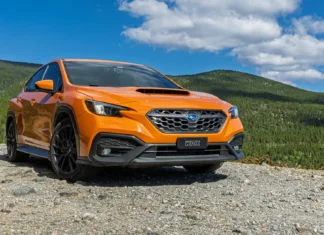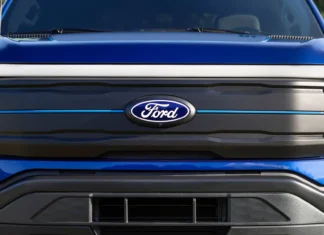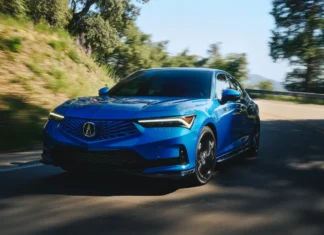
Overview
There’s nothing flashy here, but those looking for an attractive, compact SUV might want to try the 2019 Hyundai Tucson. Ranging from $23,200 to $32,950, the Tucson comes in various trim levels and can be had with front- or all-wheel drive.
New features include more equipment and an updated, quiet interior. Lane-keeping assist, forward collision warning with pedestrian detection and automated emergency braking are new standard features. And there’s a new 7.0- or 8.0-inch (depending on model) infotainment touchscreen featuring Apple CarPlay and Android Auto. Two prominent 12V outlets reside under the dash.

Comfort and Convenience
The step up into the cabin takes a little extra effort, but occupants sit higher than they would in a car. The updated interior has nice materials and good storage areas. The dashboard has a large number of clearly marked manual controls, including especially large radio volume and tuning controls on either side of the touchscreen. Automakers are becoming wary of getting low quality marks in surveys when consumers can’t easily work controls via a touchscreen.

Four tall adults easily fit, but the middle of the rear seat is stiff and best left to the fold-down armrest with dual cupholders.
The moderately large cargo area has a low, wide opening, and split rear seat backs easily flip forward and sit flat to increase cargo room from 31 cubic feet to 61.9 cubic feet. My test Tucson had a hands-free power hatch.
Safety features included a rear cross-traffic collision warning and a variety of air bags and rollover sensors, besides heated side mirrors with turn signal indicators.

Performance
I drove the upper-line Tucson Ultimate AWD model, which had a generally smooth ride, although the ride became uncomfortable on rough Chicago streets. The steering was precise, and the Tucson’s handling felt secure in curves, thanks to its electronic and stability controls and 18-inch alloy wheels. The all-disc brakes with a brake-assist feature worked fine, controlled by an easily modulated pedal.
Engines are a base 2.0-liter four-cylinder with 164 horsepower or a 2.4-liter four with 181 horsepower. The base engine could use more power. The larger, stronger engine provides just average passing on highways, but most probably would be satisfied with it. A driver can select a Sport driving mode, which firms things up a bit. On the flip side, it also drops the overall fuel economy.
There’s only a six-speed automatic transmission when rivals such as the Toyota RAV4 and Honda HR-V have either an eight-speed automatic or a CRV. However, the Tucson transmission shifts efficiently and has a manual-shift feature.
Tucson fuel economy is just so-so for this type vehicle. My test vehicle got an estimated 21 miles per gallon the city and 26 on highways.

TFLcar’s Take
The car-like 2019 Hyundai Tucson compact SUV is easy to live with. My test Tucson’s standard features included a pushbutton start, supportive leather-covered heated and ventilated power front seats, dual automatic temperature control, heated outboard rear seats, premium 8-speaker audio system, 4.3-inch color LCD multi-information display and a panoramic sunroof.
The new Tucson is one of the most attractive compact SUVs and has Hyundai’s 10-year/100,000-mile powertrain warranty.
One of the Tucson’s main assets here is that it’s nicely sized. At the 176 inches long, it’s easier to park and maneuver.

